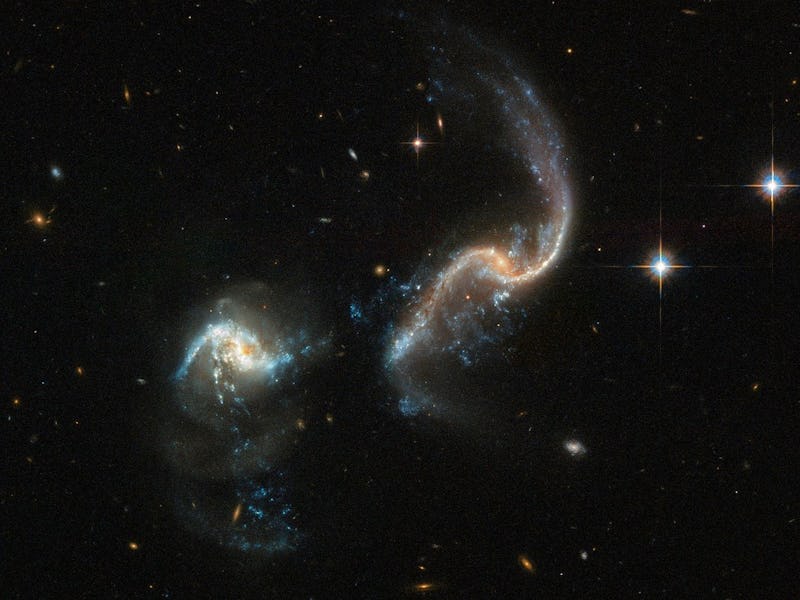This Cosmic Merger Is Giving Life To A New Generation Of Stars
It's like a gravitational dance.

From down here on Earth space might seem like a close-knit neighborhood of stars, planets, and asteroids but in reality celestial objects love to keep their distance from one another. Besides the sun, the next nearest star to Earth is 4.3 light-years away.
But every now and then cosmic objects can drift near each other and really shake things up. The picture below depicts a pair of barred spiral galaxies, or pinwheel-shaped galaxies with rectangular groups of stars at the center, beginning a breathtaking merger.
Join our private Dope Space Pics group on Facebook for more strange wonder.
This galactic couple known as “Arp 256” resides 350 million light-years away in the Cetus constellation. This image is an improved version of a shot that the Hubble Space Telescope took back in 2008. This intergalactic collision will not only change the shape of these two stellar formations, but it will give birth to a new generation of stars.
Arp 256 is a stunning system of two spiral galaxies, about 350 million light-years away, in an early stage of merging.
While it might seem like both of these galaxies are on track to ram into each other, everything in space is so spread out that there won’t actually be any plants of stars crashing into each other. Instead, the two star systems’ immense gravitational forces will cause them to warp and distort.
Even though this deep-space tango is just getting started, there is already evidence of this deformation. The galaxy at the top has an extremely pronounced tidal tail — an extended ribbon of gas, dust, and stars.
If you look closely at this dazzling band and even certain spots around the parameters of the galaxies you’ll see small twinkles of sapphire. These are stellar nurseries, regions ablaze with newborn stars forming out of the gas and dust being whipped around by Arp 256.
The two cosmic objects will continue their dance for millions of years, birthing stars and forever changing each other. This will all come to an end when they, at last, fuse into on single galaxy.
By observing these changes, astronomers can determine how millions of other star formations that dot the sky get their shape and change over time. It’s like watching a very slow but beautiful experiment unravel before your eyes.